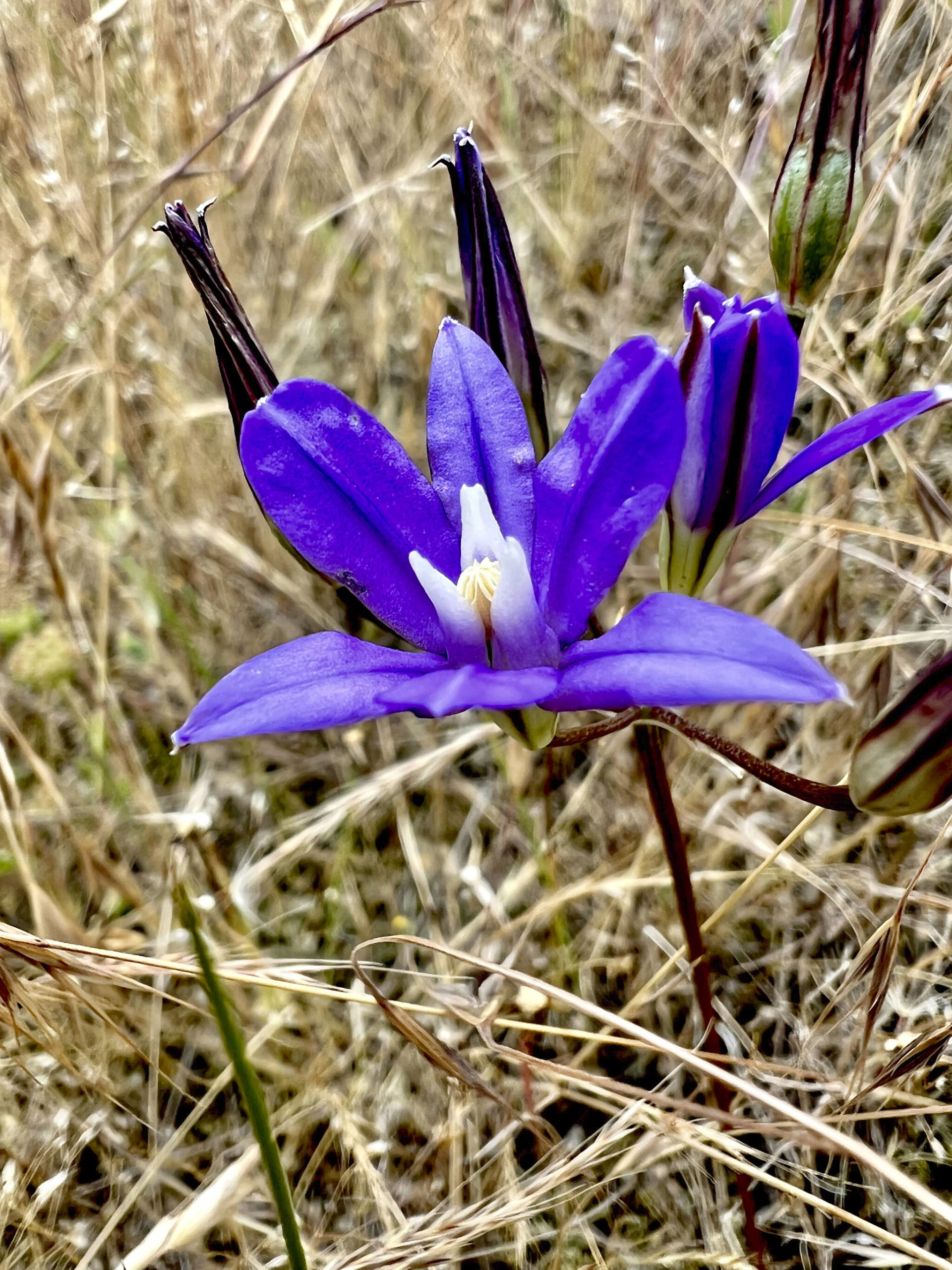The tiny purple flowers of the Indian Valley Brodiaea, or Brodiaea rosea, has not been recorded in San Juan County for 150 years. It turns out, it may have been hiding in plain sight.
“Sometimes things disappear because we lose the collective knowledge. We forget its name, what it looks like,” said Adam Martin, Eco Studies Institute Prairie Restoration Specialist. ”I think we just forgot how to look for it. It shows we have lost the collective knowledge.”
Part of the confusion may be the nearly identical subspecies, Brodiaea coronaria. Biologist Rupert Clayton explained in a comment on INaturalist, an app that helps identify wildlife, the distinction between B. coronaria and B. rosea was carefully analyzed by Robert Preston in 2013. Clayton lists key differences, as relevant to Puget Sound and San Juan Islands plants as:
The staminodes are white in B. coronaria, whereas in B. rosea they may be violet-tinged towards the base
The staminodes are flat to incurved in B. coronaria, whereas in B. rosea they are strongly inrolled
The staminodes are “uniformly wide from base to obtuse apex” in B. coronaria, whereas in B. rosea they are “tapering to the apex”
In B. coronaria the filaments have “no wings to narrow lateral wings slightly dilated only near the base” whereas in B. rosea the filaments are “winged laterally, wings broadly dilated near the base” (difficult to see on most photos, I would expect).
Clayton added that “the staminodes in your observation are strongly inrolled, with violet bases and they taper towards the tip, so I think this is B. Rosea ssp. rosea. Within iNat’s current nomenclature, that maps to B. coronaria ssp. Rosea.”
Once individuals know what to look for, they begin finding them everywhere, Martin said. Brodiaea Rosea is being found on several islands throughout the archipelago, and on multiple San Juan County Conservation Land Bank preserves.
“It’s a weird flower,” Doug McCutchen, Land Bank Preserve Steward, said. “It’s a hardy plant that loves rocky outcrops. Normally it is fairly short with only one bloom, but curiously this year, it has been growing up to 16 inches tall with multiple flowers.”
McCutchen attributed the growth to fewer deer. Usually, the plant gets grazed. Martin agreed with McCutchen’s assessment and added that the cooler wetter spring also helped the plants.
“Things are definitely more lush this year. It has been one of the most extended blooming years,” Martin said.
Martin has been researching the flora of San Juan County for several years and has been amazed by the natural history of the region. The San Juan Archipelago is unique in that it consists of only on quarter of a percent of Washington state’s land mass, and yet contains 25 percent of the plant diversity.
Species, Martin continued, that usually grow far distances from one another grow close together here. For example, on Sucia cedars and Sitka Spruces grow on the east-side of the island, while just yards away on the west-facing side are groves of Madrones. Under normal conditions, these tree species are separated by huge distances.
“As an ecologist, its has been really fun. Each island is so different. The south part of the archipelago, like the southern end of Lopez, has a bunch of weird plants, dry tundra plants that suddenly here grow at sea level. ” said Martin.
His research has led him inventorying islands that have never been inventoried before.
“It is just a joy to do that and see how diverse they are,” Martin said. He added that there are a number of plants that are native to California and not found along the coast until the San Juans.
“No one knows why we have all these California plants, but they have always been here. It keeps me curious,” Martin said, encouraging others to keep curious as well. “There is so much cool stuff here. Keep exploring, learn about the trees and obscure plants of the area,” said Martin.



